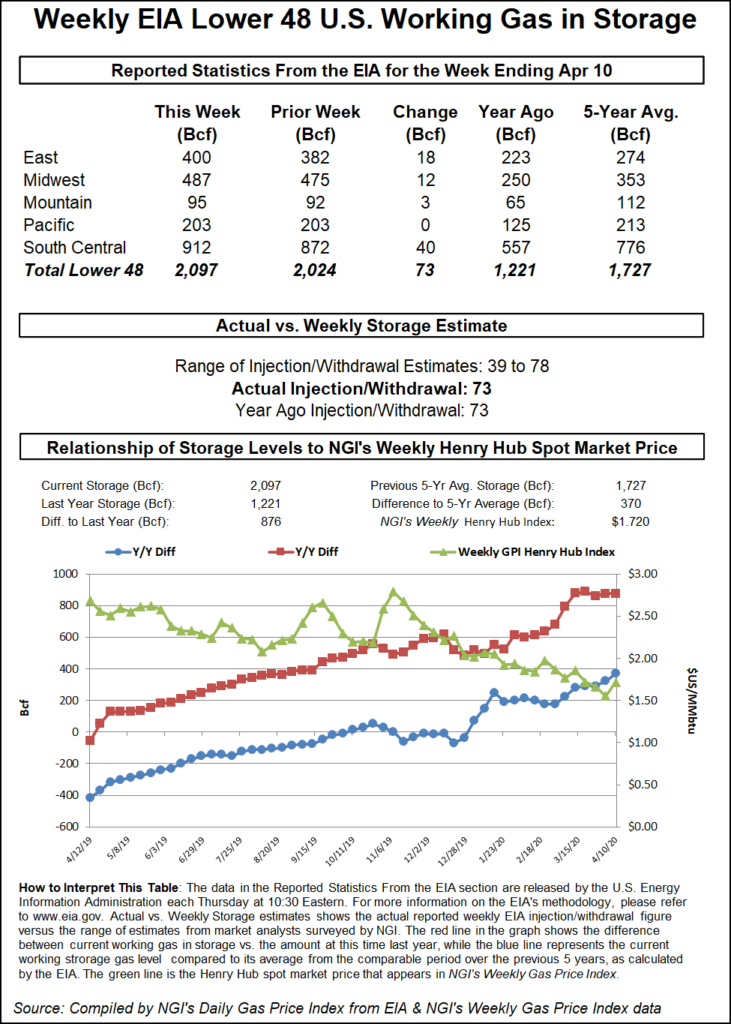EIA’s 73 Bcf Storage Build Crushes Most Estimates, but Natural Gas Holds Steady
The U.S. Energy Information Administration (EIA) reported a monstrous 73 Bcf injection into natural gas storage inventories for the week ending April 10.

While the reported build was within the exceptionally wide range of expectations, it fell on the high side and bested the lowest projection by a whopping 34 Bcf. Natural gas traders didn’t quite know what to make of the bearish storage data, initially sending prices modestly bouncing off earlier lows.
The May Nymex gas futures contract was trading at $1.563, off 3.5 cents day/day before the EIA’s 10:30 a.m. ET report was released. In the minute after the print crossed trading desks, the prompt month bounced up to $1.575. By 11 a.m., May was still trading near that level at $1.567. June futures held near $1.72.
“After last week’s number, we revised all of our projections higher, as we simply were not capturing the demand destruction enough, and we have had to do the same after this number,” Bespoke Weather Services said.
The supply/demand balance is “just obscenely loose,” said Bespoke, which indicated that the balance of the last two weeks suggests an “impossible” 5.2 Tcf at the end of the season. “Something will have to give, or each month will just get pushed lower once becoming prompt month.”
Ahead of the EIA report, a Bloomberg survey showed projections ranging from 42 Bcf to 78 Bcf, with a median build of 67 Bcf. A Dow Jones poll showed estimates as low as 39 Bcf and produced an average 58 Bcf injection. NGI’s model pegged the build at 57 Bcf.
The 73 Bcf figure is on par with last year’s build for the similar week but it crushed the 27 Bcf five-year average, according to EIA.
Broken down by region, the South Central region led with a 40 Bcf injection into storage, including 21 Bcf into salt facilities and a 19 Bcf build into nonsalts, EIA said. East inventories rose by 18 Bcf, and the Midwest added 12 Bcf. The Mountain region injected 3 Bcf, while Pacific stocks stayed flat week/week.
Working gas in storage as of April 10 rose to 2,097 Bcf, 876 Bcf above year-ago levels and 370 Bcf higher than the five-year average.
© 2024 Natural Gas Intelligence. All rights reserved.
ISSN © 1532-1231 | ISSN © 2577-9877 |
